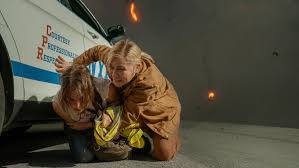Vietnam War: A Central Narrative
Viet Thanh Nguyen, in his 2016 study “Nothing Ever Dies: Vietnam and the Memory of War,” highlights the tendency of American artistic works, particularly Hollywood war movies, to center the narrative around Americans, despite engaging in anti-American criticism. This trend extends to the depiction of war as a uniquely American trauma.
Alex Garland’s ‘Civil War’: Beyond Partisan Divisions
While much discussion around Alex Garland’s “Civil War” revolves around its reflection of America’s current political divide, the movie transcends this narrow interpretation. It delves into the tradition of Americanizing experiences of wars overseas, reimagining foreign war correspondents’ experiences and atrocities within the US context.
Deconstructing the War Movie Tradition
Garland skillfully navigates the ambiguity of the narrative, obscuring and reimagining the conventional war movie tropes. By focusing on journalists as observers of war, he offers a nuanced exploration of the parallels and contrasts between their perspectives and those of movie viewers.
The Narrative of ‘Civil War’
Setting and Characters
Set in a near future where the US is fragmented into warring factions, the movie follows the journey of photojournalist Lee and journalist Joel as they embark on a perilous mission to Washington, DC. Joined by aspiring photographer Jessie and seasoned war correspondent Sammy, they navigate through a landscape of political turmoil and personal danger.
Challenging Conventional Narratives
A Critical Lens
“Civil War” challenges the conventional Hollywood portrayal of war by reframing the narrative through the lens of foreign war correspondents and by critiquing the American-centric approach to storytelling.




